Phyllotaxis as a Natural Phenomenon
Spirals are considered to be low-energy configurations occurring in nature. In plants, spiraling prevails in the clockwise and counter clockwise directions at a specific ratio consisting of Fibonacci numbers. This creates patterns native to species ranging from pineapples to palm trees. Through the generation of these patterns, branches and leaves emerge in a specific arrangement. We incorporated the described rules in designing a complex semi-permeable pavilion where parametrically evolved faces replaced leaves.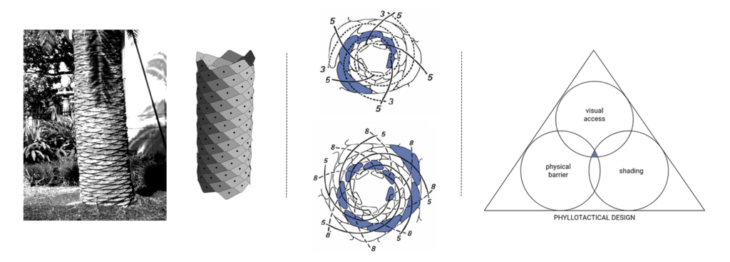
The ‘Cape of the Creek’
At a distance from the bustling city of Dubai, a rarely found gem is the Ras Al Khor Wildlife Sanctuary – residence to hundreds of species of birds, a breeding ground for many, migratory land for thousands. The show stoppers are flamingos that visit annually, drawing masses of visitors in three “hides” built across the sanctuary. As it undergoes plans of renovation, the proposal is an alternate design for these hides using digital tools.
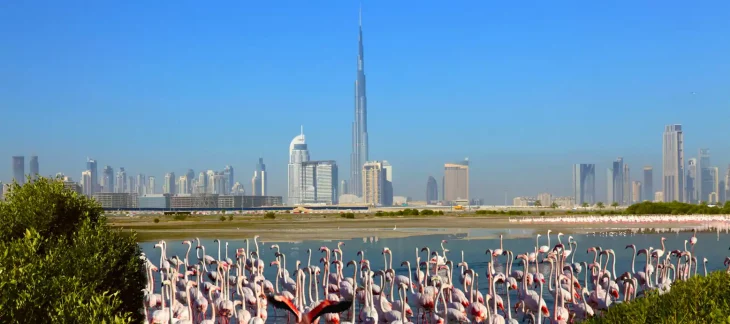
Flamingos visiting wetlands of the Ras Al Khor Sanctuary during winter
A “hide” functions to provide closer views towards animal habitats while acting as a physical barrier between visitors. Moreover, considering the local climate of the region which tends to be uncomfortably hot during the day even in winters, these hides provide shade. An important feature is the small openings that allow visual connection from within.
Design Process
Since design is developed keeping the program and site in mind, adopting local practices and materials like palm tree leaf stem-bundles as structural elements in Arish-style architecture influenced the process. For computation, use of Grasshopper plugins like Phyllo machine allowed the adoption of plant behavior on a surface; Weaverbird was used for mesh discretization; Kangaroo3D for geometric form-development and Galapagos for optimisation using analysis from Karamba 3D and LadyBug Tools.
Primitive Form-Finding
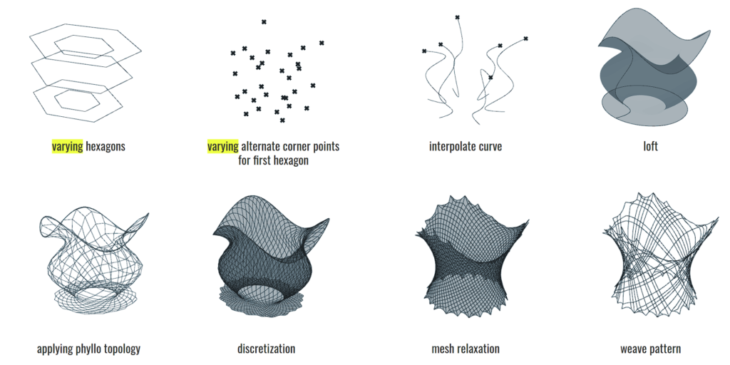 Step 1: We began with a concave volume geometry that could accommodate an inflow of population. The result was a series of hexagons with varying heights and radii that was lofted to form a surface
Step 1: We began with a concave volume geometry that could accommodate an inflow of population. The result was a series of hexagons with varying heights and radii that was lofted to form a surface
Step 2: The surface was subjected to phyllotactic rules to form the mesh topology during conversion (we applied a ratio of 21:34)
Step 3: This mesh was refined and relaxed for better structural performance and a woven skeleton was extracted
Step 4 : Optimisation
Optimisation
Genetic algorithms aided in concluding the resultant form by setting fitness objectives.
In our first set of studies, we looked at alternatives to reduce the amount of material use so we proceeded with the following logic:
goal = to have a light, yet high surface area structure
fitness value = maximum {surface area / (displacement + mass)}
genes = hexagon radii, heights & corner lifts
We then optimised the cross-sectional area of the frame to deal with better utilisation and displacement values.
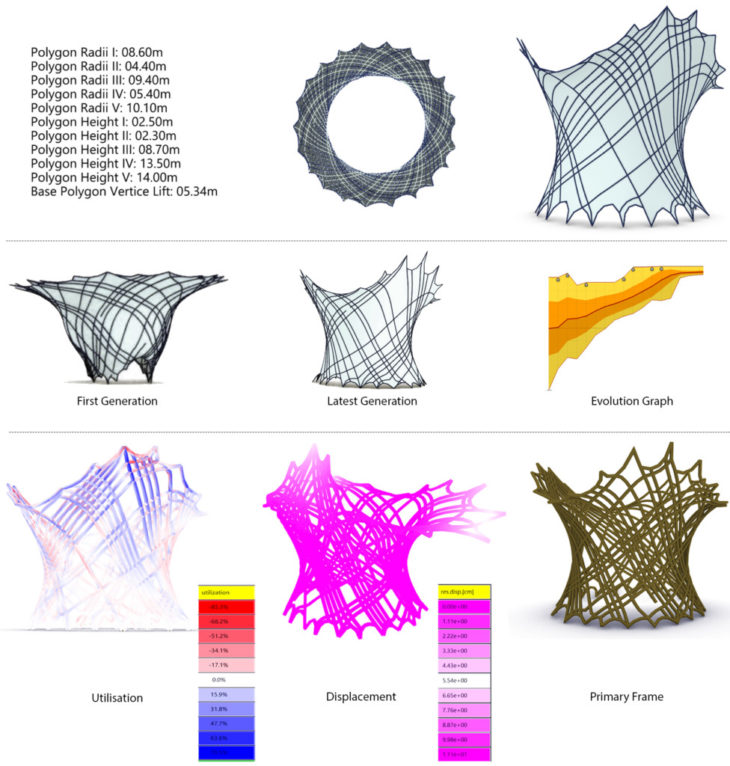
The next objective corresponded to efficient tessellation of voids. Hence,
goal = to have as many openings yet maximum sun shield
fitness value = maximum {(total mesh area – window area)/ insolation inside during Oct-March}
genes = window offset percentile

Result
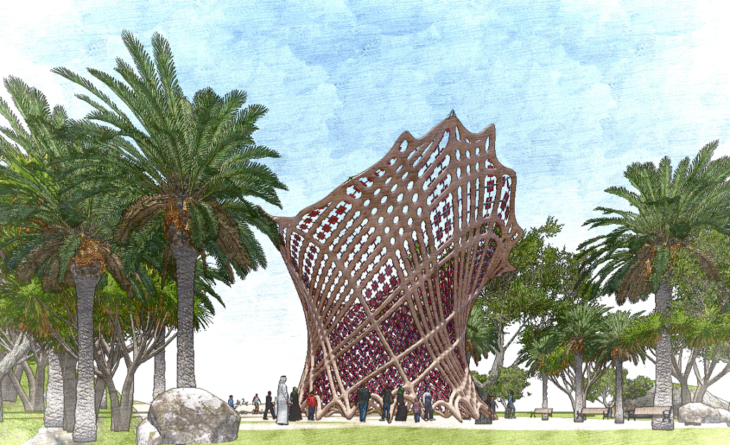
The pavilion blends in with the surrounding palm trees as it replicates their phyllotactic nature
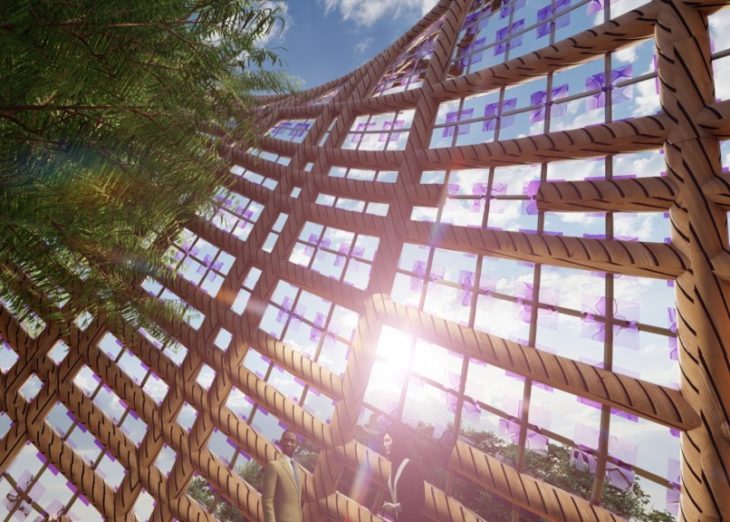
The experience is enhanced with light that penetrates through recycled plastic panels creating a diffused colorful atmosphere within the Phyllo Pavilion interior
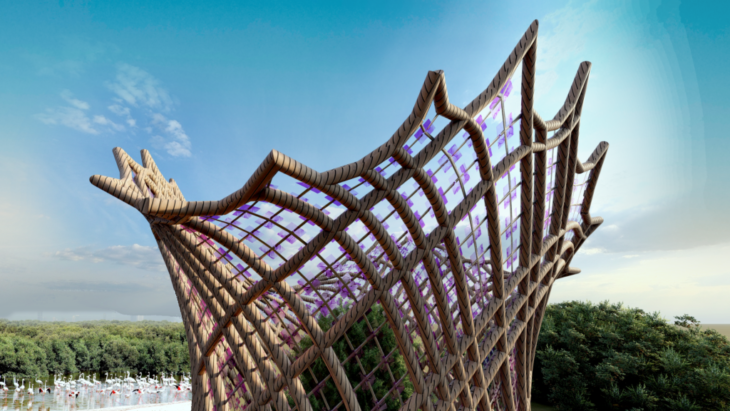
Visitors could potentially indulge in their surroundings without intruding the animals’ space or habitat
Credits
Phyllo Pavilion is a project of IaaC, Institute for Advanced Architecture of Catalonia developed in the Master in Advanced Computation for Architecture & Design 2021/22 by
Students: Maryam Deshmukh, Sidhant Choudhary
Faculty: Rodrigo Aguirre, Hesham Shawqy